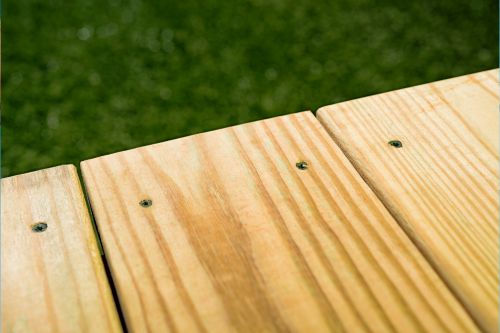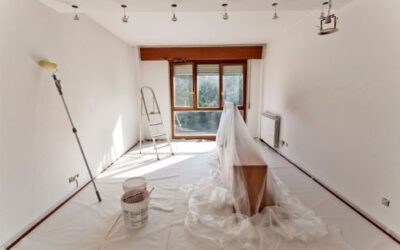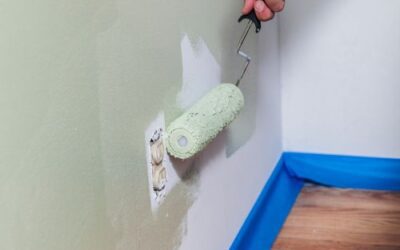Wood that lives outdoors faces a relentless script: UV radiation that discolours, rain that swells the fibre, saltpetre that dries it out and fungus that sets in as the protective film ages. The result is visible to the naked eye: the original colour fades, fine cracks appear and water stops forming droplets. To avoid this process requiring sanding and a fresh start, it is a good idea to be aware of the actual maintenance interval and to get a light coat before the deterioration becomes visible.
Contact our professionals
1. Climate and orientation: the biological clock of the finish
A pergola located just a few metres from the sea can withstand salt spray and direct sunlight; there, a transparent lasure needs to be refinished every twelve to eighteen months. By contrast, the same product applied to an urban patio protected by overhangs can withstand three full summers. The rule of thumb is simple: the greater the exposure to UV and humidity, the shorter your treatment schedule. To understand how we protect wood in these extreme environments, see our exterior wood treatment page.
2. Product used: oil, lasure or varnish
Not all coatings age in the same way:
-
Oils or saturants: penetrate without creating a film; they feed the grain and repel water, but require annual refreshing.
-
Transparent woodstains: protect and show the grain; their UV filter is limited, so they should be refreshed every 18-24 months.
-
Pigmented lasures: iron oxides act as a sunscreen and extend the life to 3-4 years.
-
Opaque lasures or open pore varnishes: greater thickness and elasticity; they are reviewed after 4-5 years.
-
2K polyurethane marine varnish: the longest lasting formula (up to 7 years), but requires extensive sanding when renewing.
A quick review of the article ‘How to treat exterior wood’ will help you choose the finish that best suits your project.
3. Species and design of the piece
Dense tropical woods (ipe, iroko) contain natural oils that slow down ageing. On the other hand, pine or spruce need shorter cycles and a fungicidal protective base. In addition, horizontal surfaces (decking, railings) accumulate more water and radiation than vertical panels, so the same wood may require annual oiling on the decking and only a biannual recoating on the sides.
4. Initial application: where years are gained -or lost-
An impregnated primer and two generous coats applied at the correct humidity and temperature guarantee the maximum life span promised by the manufacturer. If only a hasty ‘one coat’ was applied on the day of the job, the film may crack in the first season. Our basic care guide to extending the life of exterior wood delves into the importance of thickness and drying.
5. Signs that the time has come
-
Colour fades or whitish areas appear.
-
Water ceases to pearl and penetrates into the grain.
-
Micro-cracks appear or the surface becomes rough.
-
Mould stains appear in shady corners.
Detecting them in time means cleaning, light sanding and a coat of renovation; ignoring them means deep sanding and rebuilding the whole system.
6. Step-by-step maintenance
-
Simple cleaning with soapy water and soft brush.
-
Degreasing and pore opening (only on decking) if recommended by the oil manufacturer.
-
Light sanding with fine sandpaper (180-220) to tone down and remove raised fibre.
-
Apply in the direction of the grain, respecting consumption and drying time.
-
Second coat only when completely absorbed by the wood.
For very humid climates, follow the extra tips we shared in our article on wood maintenance in humid climates.
There is no universal schedule, but the real range is from an annual touch-up with oil in marine environments to a complete repaint every five or six years with opaque lasures or 2K varnishes in sheltered areas. Observing the wood, acting before the film breaks down and using professional products applied at the correct thickness is the formula that turns a pergola into a beautiful and long-lasting element.
If you need technical advice or prefer to delegate the renovation, contact Bartolomé Bas Pinturas: we will evaluate your case and draw up a personalised maintenance plan so that your exterior wood remains a source of pride… and not a worry.
Other publications that may interest you
Paint suitable for basements and poorly ventilated rooms
Basements, storerooms or garages have unique conditions: poor ventilation, high humidity and increased risk of mould or condensation. Using conventional paint in these spaces is a common mistake that leads to ephemeral finishes and health problems due to fungi or...
How often should a house be painted depending on its use?
The frequency with which you should paint a house is not always the same. It depends on several factors: the use given to each room, the quality of the paint used, exposure to light or humidity, and even the colour. In this guide we explain how often you should renew...
Tips for painting a room without staining doors and sockets
Painting a room may seem like a simple task, but without the right preparation it's easy to end up with splashes on doors, sockets, switches and even skirting boards. If you want a clean, professional finish, we've got the best tips to avoid stains and save you...




